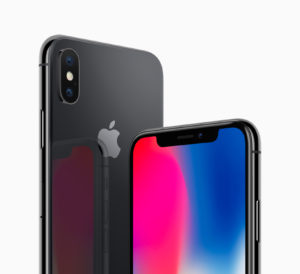7 tried and true ways to make a book cover decision
“Which book cover do you like more?”
That question is a social media staple in author circles.
Sometimes, the author offers up a couple of completely different looks.
Other times, the cover choices have only subtle changes – different ink colors or fonts for the book title, or slight changes in the background image intensity, for example.
There’s no question that this is a popular cover selection strategy.
But is it the only one?
I asked a couple of cover designers and a book sales pro to weigh in with their time-tested advice for making a book cover decision. Here’s what they had to say.

1. Take it to a librarian or bookstore clerk.
“Ask bookstore employees. They know what sells,” says designer Michele DeFilippo of 1106 Design.
Amy Collins of New Shelves Books, a company that places books in libraries and stores, agrees.
“What’s more important than the opinion of friends and family is what your local bookseller or librarian thinks,” she says. “Librarians see thousands of new books every month – along with their checkout rates.”
2. Get opinions from your target audience.
“That’s who you will be marketing to,” says designer Peggy Nehmen of Nehmen-Kodner.
“I see a lot of people posting cover options on their Facebook profiles or to book marketing Facebook groups, but the people who see it might not be in your target audience,” she says.
You’ll get a lot of feedback, for sure, but it might not be the right feedback.

3. Ask the people on your email list.
Your email subscribers are most likely in your book’s target audience, making them the right people to provide feedback on cover options. After all, when they added themselves to your list, they were saying, “I like what you write about.”
“If you’re a new author without a list, seek out writing groups and editors who have experience,” Nehmen says.
4. Take the opinions of friends and family with a grain of salt.
“When you ask friends and family to weigh in, you’re asking people to set aside human nature and a lifetime of conditioning to ‘be nice’ to share an honest opinion, and that’s asking a lot,” says Collins.
What’s more, DeFilippo adds, opinions from people outside your target audience and the publishing industry can backfire.
“Often, their well-meaning suggestions can completely unravel a good design,” she says.

5. Ask someone else to gather opinions for you.
Many people are reluctant to provide negative feedback directly to the author, so Collins recommends taking yourself out of the voting process.
“Ask someone you’re not close to to gather opinions,” she advises. “People will be more honest when they don’t have an emotional connection to the person asking for an opinion.”
One of the best ways to do this is to trade covers with another author. When you do this, be certain to provide specific direction on whose opinions to solicit – don’t expect your representative to know this.
6. Leave your opinion out of the book cover decision.
Unless you’re an avid reader of the genre you write, don’t focus on what you like. Focus on what your readers like.
The author of a self-help book for women asked me to weigh in on several possible cover designs. All were decidedly masculine; none would appeal to me as someone in his target audience. I explained why I couldn’t select any of the choices.
When I saw that he used one from the batch I had rejected, I suspected that he picked his favorite after all. I’ve been guilty of doing that, too, but it’s the wrong approach.
“The cover isn’t about the author. It’s about attracting buyers,” says DeFilippo.
7. Have a little faith in your designer.
An experienced and successful cover designer researches genre styles and current trends to create a cover that looks like a best seller.
If you’ve hired someone who knows what they’re doing, let them do it. They’re one of your best resources when making a book cover decision.
How do you decide which cover to use when they all look good? Please tell us in a comment.
Tip of the Month
 I like to share a “Tip of the Month,” a free resource or tool for authors, on the last Wednesday of the month.
I like to share a “Tip of the Month,” a free resource or tool for authors, on the last Wednesday of the month.
This month’s tip — or tips, really — should save you a little time when using your smartphone. Heather Lutze at Findability University introduced me to these voice command cheat sheets for both Apple’s Siri and Google Voice:
Use these to become a phone boss!
No more looking for your contacts icon, then typing a name into the search box. No more pulling up your calendar, looking for the date, and manually adding an appointment.
Review your list to become familiar with the possibilities, then tell your phone what you need. You’ll make things happen more quickly.
Like what you’re reading? Get it delivered to your inbox every week by subscribing to the free Build Book Buzz newsletter. You’ll also get my free “Top 5 Free Book Promotion Resources” cheat sheet immediately!


My faith is with my designer, the seventh of this list. Their work blows me away, and if others don’t buy it, well, they don’t. But I can be proud of my choice even if I ignore “pride goeth before a fall.” Perhaps it’s the grit of failures past from all aspects of life hardening me, though my muse seems to get great joy out of the whole process.
I love it, Gary. Be sure to show your designer your comment! Everyone likes knowing they’re appreciated.
Sandy
Thanks, Sandra and guest authors. I’ve never considered a librarian for cover advice. Brilliant suggestion.
These pros have experience!
Sandy
I also took color prints of the 2 final cover options (at actual size) to the bookstore and set them on the shelf next to other books in my niche, and I asked store employees and book store shoppers which one they liked. I wanted to see which one popped compared to the “competition.”
Great idea, Roxanne!
Sandy
All 14 contracts I’ve had gave responsibility for cover design to the (seven) publishers. All asked for suggestions up front, which I gave. Each sent me proofs, asking my opinion, even though they did not need my approval. Several times I had qualms and expressed them. When one publisher sent me a third rendering, the editor said I was holding up production; that I needed to choose one of the three, which I did. I do not have an agent and deal directly with editors and publishers. I find them to be accommodating. They act as if a successful book benefits us all, that we are all in this thing together. Well, ye-ah.
With traditional publishing contracts, there’s less risk of getting a bad cover because they work with professional cover designers with genre expertise, etc. That’s not to say they don’t ever get it wrong, but when you’ve got a contract that pays an advance and you don’t have to deal with production details, you’re usually in good hands with that cover design.
Sandy
Great ideas. Thanks!
You’re welcome!
Sandy
These suggestions are very helpful. I sometimes feel that the “request” for input is just a transparent way to try to engage an author’s social media audience, not a real request. In fact asking one’s social media circle for advice on this and that is a frequent tip for increasing engagement!
Thanks, Vicki. I’m sure you’re right, but I can live with that. (I feel their pain!)
The other thing I’ve noticed about these social media book cover posts is that many times, the author isn’t really open to the feedback they’re supposedly requesting. Every suggestion gets a defensive “Yes, but” response. Many times, what they’re really asking for is for us to say, “I LOVE IT! IT’S PERFECT!”
Sandy
As always, Sandra, you provide the best advice. Thank you.
Aw, thanks, Tracy! I’m so glad these smart people could help.
Sandy
I think one is missing – have 3-5 authors in your genre and ask them instead of everyone else on the outside. Authors won’t be able to tell if cover is designed well in technical terms (only designers can) but they can tell if it works with the genre, trends etc. So it’s better than asking family members or even readers.
Asking readers should be more a stay-in-touch thing rather than feedback loop.
That’s a great tip, Adrijus! Just make sure you run it by *successful* authors in your genre.
Thanks!
Sandy